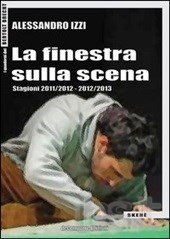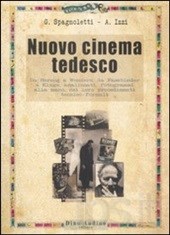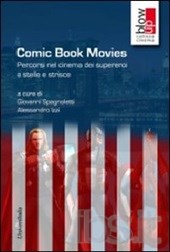 2017 – The strategies of oblivion, Universitalia editions, Roma, 2017, pag. 392 ISBN 978-88-6507-830-3
2017 – The strategies of oblivion, Universitalia editions, Roma, 2017, pag. 392 ISBN 978-88-6507-830-3
After a time of collective denial of a past difficult even to think and to imagine, our cinema today appears to be full of fervent attention to the Jewish extermination. Yet, this experiential use of the memory of the Holocaust, by detaching itself from historical facts, turns into a mere representation of absolute evil, an evil that transcends history and has little to do with our Italian history and our responsibility. In this perspective, the collective amnesia and the redundancy of memory are two poles of the same problem. Alessandro Izzi’s mindful and rich work of analysis and reconstruction of the Italian Holocaust cinema stands at the crossroads between history and memory. It retraces the various historical phases that correspond to the story of the representation of the Holocaust and of the collective memory and discovers at the very core of the book the common thread linking the silence of the postwar period and the saturation of our commemorative days.
 2013 – The window on the scene, deComporre editions , Gaeta , 2014 , p. 142 ISBN 978-88-98671-00-7
2013 – The window on the scene, deComporre editions , Gaeta , 2014 , p. 142 ISBN 978-88-98671-00-7
This volume contains the reviews of the shows organized by the Bertolt Brecht Theater of Formia in the past two years, that were previously published on the Theater Corporate’s website. They are heterogeneous texts providing a fairly comprehensive overview of the Bertolt Brecht’s programming and education initiatives in the Formia territory, and documenting the important activities of a company that is going to be forty years old.

2009 – New German Cinema , Dino Audino Editore, Rome , 2009, ( with John Spagnoletti ) , p. 136 ISBN 978- 88-7527-067-4
The recent success of films like ” Good Bye Lenin ” and the Oscar-winning ” The Lives of Others ” returned the German film industry to the international spotlight twenty years after the conclusion of the “New German Cinema” season. Many contemporary authors, in fact, have their roots in the movement that was born at the beginning of the sixties as a result of the French Nouvelle Vague, when a group of young directors began to meet under the auspices of the Oberhausen Manifesto (1962) reclaiming the glories of the past expressionist, but still oriented to the new, the original, the free. The difference, compared to their French colleagues, was in the political dimension: rejecting the cinema of the fathers (but not that of the grandparents: Fritz Lang or Friedrich Murnau ), the filmmakers of the New German Cinema refused any compromise with the legacy of Nazism. This attitude towards the past is reflected in the sense of national identity that that each author strived to build. A love-hate relationship with the Heimat (Homeland), lived as a reality from which everyone has to escape to be free, but to which they had to consistently return.
 2008 – From Tibet to Hollywood , Arachne , Rome, 2008, page 200 ISBN 978-88-548-2036-4
2008 – From Tibet to Hollywood , Arachne , Rome, 2008, page 200 ISBN 978-88-548-2036-4
The book is an attempt to analyze the difficult and contradictory relationship between the cinema (or at least among the Western idea of cinema) and Buddhism. Through the analysis of the works of three of the greatest living filmmakers who tackled, as westerners, the theme of Buddhism such as Scorsese, Herzog and Bertolucci (the films taken into account are , of course, ” Kundun “, ” Little Buddha ” and ” Kalachakra “, with the inclusion of ” Seven Years in Tibet ” by Annaud ), the author constructs a complex fresco of interrelationships, references , connections between Buddhist philosophy and the materialism of the capitalist western world. ” The filmic analysis then ,” in the words of the introduction written by Giovanni Spagnoletti , ” reclaims the liberty of interpretation and imagination that belongs to it, proposing scenarios other than those usually found in the works of cinephile exegesis.”
Curatele
 2013 – Comic Book movies, ( with Giovanni Spagnoletti ) , Universitalia edizioni, Rome , 2013 p. 206 ISBN 978-88-6507-406-0
2013 – Comic Book movies, ( with Giovanni Spagnoletti ) , Universitalia edizioni, Rome , 2013 p. 206 ISBN 978-88-6507-406-0
Contemporary American cinema hungers for Superheroes in order to survive. While the massive use of special effects tries to bring the spectator back to the movie theaters through a huge overload of spectacularity, on the other hand the continuous crossing of communication strategies on the home screens and the Internet seems to point to new and original developments in the cultural (random?) context borne out of the digital revolution. While contributing to a growing recognition of the more and more successful link between cinema and comics, this volume represents an attempt to analyze its implicit contradictions and, at the same time, its nature of hotbed for the experimentation of innovative media languages . Divided into two parts (the first one more strictly theoretical, the second an analysis of current practice), the book turns a famous maxim of Bertolt Brecht around into a different question : is it fortunate or unfortunate a cinema that needs (Super) heroes? Contains essays by : Diego Altobelli , Riccardo Fassone ,Andrea Fontana , Alessandro Izzi , Luca Lardieri , Salviano Miceli, Emiliano Morreale , Fabiana Proietti, Emanuele Protano , Giovanni Spagnoletti .
